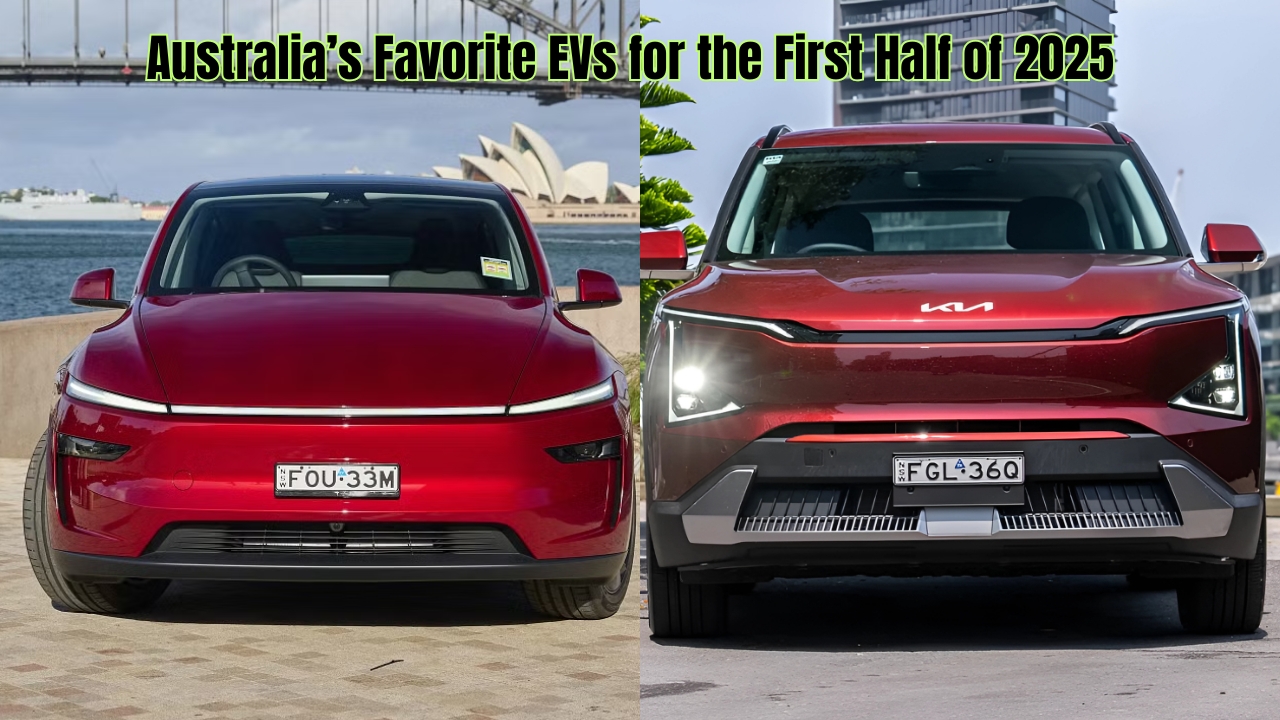Australia’s electric vehicles market surged to new heights in the first half of 2025, with EVs capturing more than 12% of all new car sales – a significant jump from 9.6% in the same period last year.
An additional 14,000 EVs were sold compared to the first six months of 2024, marking a pivotal moment in the country’s transition to electric mobility.
Market Performance and Growth Trajectory
Record-Breaking Sales Figures
The Australian EV market reached a historic milestone in June 2025, when battery electric vehicles achieved a record 10.3% market share with 13,169 units sold, up from 9.2% in May and 8.3% in June 2024.
This surge was driven by several factors including improved model availability, competitive pricing, and the introduction of the New Vehicle Efficiency Standard (NVES).
Policy Impact and Market Dynamics
The Electric Vehicle Council CEO Julie Delvecchio attributed the growth to federal government support through policies and incentives, along with increasing consumer recognition that switching to electric vehicles benefits both the environment and their wallets.
The New Vehicle Efficiency Standard brought consumers more choice in electric cars and more competitive prices.
Top-Performing Electric Vehicles Models
Tesla Model Y Dominates Despite Competition
The Tesla Model Y maintained its position as Australia’s best-selling electric vehicle, recording 3,457 sales in June 2025, though this was slightly below the 3,580 sales achieved in May when the refreshed “Juniper” version launched.
The Model Y’s continued success reflects Tesla’s strong brand presence and the appeal of its updated features.
BYD’s Impressive Market Penetration
BYD demonstrated remarkable growth, with the Sealion 7 achieving 1,795 sales in June – its best month yet, bringing year-to-date sales to 3,756 units. BYD secured multiple positions in the top seven battery electric vehicles, including the Seal sedan (627 sales), Atto 3 (576 sales), and Dolphin (561 sales).
Geely EX5 – The New Challenger
The newly launched Geely EX5 made an impressive debut, securing fourth place with 822 sales in June, benefiting from a cashback incentive ahead of the financial year end.
Priced competitively at an estimated $43,490 plus on-road costs, the EX5 positions itself as a compelling alternative to both the Tesla Model Y and BYD Atto 3.
Tesla Model 3 Rebounds
The Tesla Model 3 regained its position among top sellers with 1,132 sales in June, marking its best month in 2025. This recovery demonstrates Tesla’s ability to maintain relevance across multiple vehicle segments.
Plug-in Hybrid Electric Vehicles (PHEV) Success
BYD Shark 6 – The Game Changer
The BYD Shark 6 ute emerged as a standout performer in the PHEV category, with 2,993 units sold in June representing nearly half of all PHEV sales.
Priced at $57,900 before on-road costs, the Shark 6 undercuts traditional diesel competitors like the Ford Ranger XLT Bi-Turbo ($63,640) and Toyota HiLux SR5 ($63,260).
Technical Specifications and Appeal
The Shark 6 combines a 1.5-litre turbo-petrol engine with two electric motors for a combined 321kW/650Nm powertrain, plus a 29.58kWh battery that allows 80-100km of electric-only driving.
This represents a significant shift in the traditionally diesel-dominated ute market.
Chinese Brand Dominance
Market Share Expansion
Chinese manufacturers now account for 77% of EVs sold in Australia, with brands like BYD, Geely, MG, GWM, and Chery leading the charge. This dominance reflects China’s leadership in EV technology and competitive pricing strategies.
Value Proposition
The most affordable EV in Australia is the BYD Dolphin Essential, available from $32,138.45 driveaway, followed by the GWM Ora at $33,990. These competitive price points are helping drive mass market adoption.
Future Outlook and Challenges
Infrastructure Development
Charging infrastructure is being built out at a phenomenal rate, with major retailers like Bunnings installing EV chargers at their stores, and comprehensive coverage being established along major transport corridors.
Market Maturation
Australia now has 89 BEV models available, with Professor Ray Wills of the University of Western Australia noting that “Australian electric vehicles sales have completed the groundwork for the step change to double-digit share of sales.”
Performance Comparison Table
| Vehicle Model | June 2025 Sales | Price Range (before on-roads) | Type | Key Features |
|---|---|---|---|---|
| Tesla Model Y | 3,457 | $58,900 – $68,900 | BEV | 466-551km range, Supercharger network |
| BYD Sealion 7 | 1,795 | $52,998 – $59,998 | BEV | 550km range, blade battery |
| Tesla Model 3 | 1,132 | $54,900 – $64,900 | BEV | 513-629km range, updated interior |
| Geely EX5 | 822 | $43,490 – $47,490 | BEV | 410-430km range, competitive pricing |
| BYD Seal | 627 | $48,011 – $58,260 | BEV | 570km range, sedan styling |
| BYD Atto 3 | 576 | $44,499 – $49,499 | BEV | 420km range, compact SUV |
| BYD Dolphin | 561 | $32,138 – $38,890 | BEV | 427km range, most affordable |
| BYD Shark 6 (PHEV) | 2,993 | $57,900 | PHEV | 100km EV range, 2500kg towing |
Frequently Asked Questions
What drove the EV sales surge in Australia during H1 2025?
The growth was driven by federal government support through the New Vehicle Efficiency Standard, bringing more choice and competitive prices, plus increasing consumer recognition of environmental and financial benefits.
Which brands are leading Australia’s EV market?
Chinese brands dominate with 77% market share, led by BYD, Tesla, MG, Geely, and GWM, offering competitive pricing and advanced technology.
Are there enough charging stations for the growing EV fleet?
Yes, charging infrastructure is expanding rapidly with major retailers installing chargers and comprehensive coverage being established along major transport highways.
